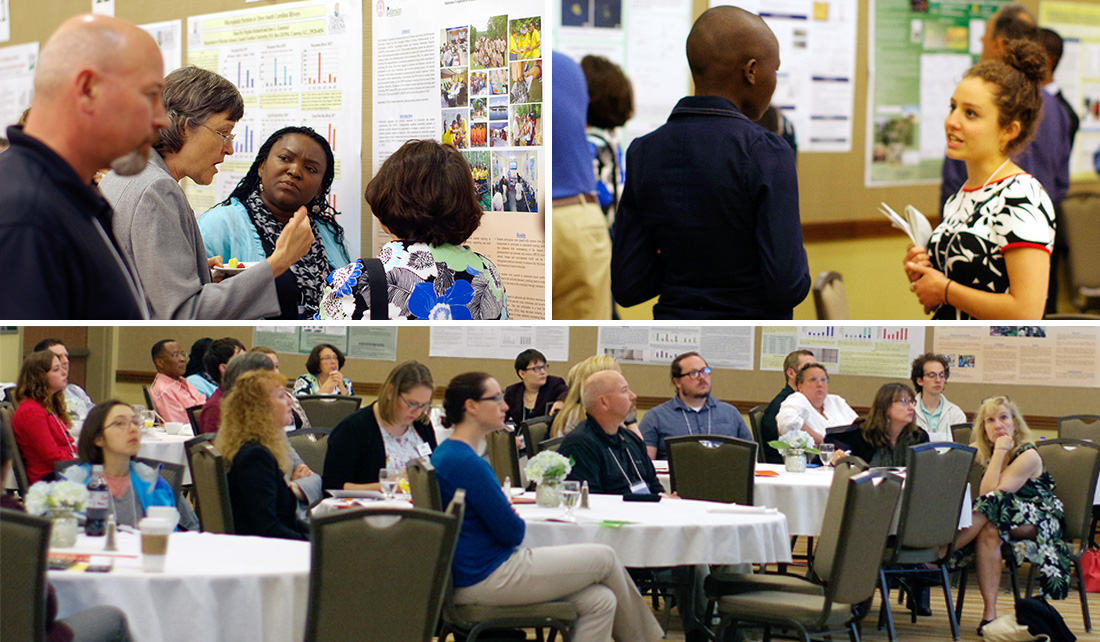
Unfortunately in the United States we pollute at a rate much faster than we can put control measures in place. New chemicals and substances are continually being developed and used to enhance our industrial processes and products. A drawback to this advancement is that in some cases, when a chemical so novel, we have difficulty understanding the full effects it’s having on the environment or public health. This is what researchers are looking into when they study emerging contaminants.
As part of the IISG pollution prevention team led by Sarah Zack, I attended the Emerging Contaminants in the Aquatic Environment Conference (ECAEC), organized by the Illinois Sustainable Technology Center and IISG. The conference was a two-day crash course on the newest pollutants causing concern for the health of our waterways. Nearly 100 people attended to listen to four invited speakers, 27 contributed talks, and view 18 posters.

While last year’s conference zeroed in on contamination from pharmaceuticals and personal care products, this year we heard from researchers studying a wide variety of contaminants—from harsh-sounding chemicals used for things like flame retardants and stain repellents, to everyday items winding up as litter and microplastic on our beaches.
I found it reassuring to hear from researchers who are working so diligently to understand how these contaminants are getting into our water, how they move through the ecosystem, and their effects on not only the tiniest organisms in the environment, like microscopic plankton but all the way up to humans as well.
One of the four keynote speakers, Barbara Mahler from the U.S. Geological Survey, presented her research on coal-tar-based pavement sealcoat that is sprayed or painted on top of many asphalt parking lots, driveways, and playgrounds. Mahler found that coal-tar sealcoat, and particularly the dust that results from its wear and tear, is a major source of polycyclic aromatic hydrocarbon (PAH) contamination. Many PAHs are known to cause cancer, mutations, and birth defects in addition to being acutely toxic to aquatic life. Her work has informed policy in Austin, Texas where she conducted her research, as well as in other states and cities across the country.
Another keynote and familiar face for Illinois-Indiana Sea Granters, Tim Hoellein discussed several projects he’s working on relating to anthropogenic litter—trash that is making its way from people onto our beaches, in our rivers, and ending up in our Great Lakes.
And it’s not just the chemists and biologists who are toiling away on this complex, moving-target-of-an-issue. Having been to my share of scientific conferences, I was impressed at the variety of disciplines represented at ECAEC. Social scientists, educators, and even an attorney (yet another captivating keynote speaker, Stephanie Showalter Otts) also weighed in on the conversation of how to tackle the problem of emerging contaminants.
For me, it was especially cool to hear scientists in the room call out the necessity of working across disciplines and involving social scientists to further the reach of their research. It’s clear that the road ahead will not be easy, but I walked away from this conference feeling encouraged that there are brilliant, innovative people who are working to address these challenges from many angles.
Illinois-Indiana Sea Grant is a part of University of Illinois Extension and Purdue University Extension.

